Today, dear friends, the subject of our article will be the ancient religions. We will plunge into the mysterious world of the Sumerians and Egyptians, get acquainted with fire worshipers and learn the meaning of the word "Buddhism". You will also learn where religion came from and when the first thoughts of man appeared about
Read carefully, because today we will talk about the path that humanity has passed from primitive beliefs to modern temples.
What is "religion"
A very long time ago, people began to think about questions that cannot be explained only by earthly experience. For example, where are we from? Who created the trees, the mountains, the seas? These and many other questions remained unanswered.
The way out was found in the animation and worship of phenomena, landscape objects, animals and plants. It is this approach that distinguishes all ancient religions. We will talk about them in more detail later.
The term "religion" itself comes from the Latin language. This concept means world awareness, which includes higher powers, moral and ethical laws, a system of cult activities and specific organizations.
Some modern beliefs do not correspond to all points. They cannot be defined as "religion". Buddhism, for example, is more inclined to be attributed to philosophical currents.
Before the emergence of philosophy, it was religion that dealt with issues of good and evil, morality and morality, the meaning of life, and many others. Also, since ancient times, a special social stratum has stood out - the priests. These are modern priests, preachers, missionaries. They not only deal with the problem of "saving the soul", but represent a fairly influential state institution.
So, where did it all begin. Now we will talk about the emergence of the first thoughts about the higher nature and supernatural things in the environment.
primitive beliefs
We know about beliefs from cave paintings and burials. In addition, some tribes still live at the level of the Stone Age. Therefore, ethnographers can study and describe their worldview and cosmology. It is from these three sources that we know about the ancient religions.
Our ancestors began to separate the real world from the other world more than forty thousand years ago. It was at this time that such a type of person as the Cro-Magnon, or homo sapiens, appears. In fact, he is no longer different from modern people.
There were Neanderthals before him. They existed for about sixty thousand years before the advent of the Cro-Magnons. It is in the burials of Neanderthals that ocher and grave goods are first found. These are symbols of purification and materials for the afterlife in the other world.
Gradually, a belief is formed that all objects, plants, animals have a spirit in them. If you manage to appease the spirits of the stream, there will be a good catch. The spirits of the forest will give a successful hunt. And the pleasing spirit of a fruit tree or field will help with a bountiful harvest.
The consequences of these beliefs have been preserved for centuries. Isn't that why we are still talking with devices, devices and other things, hoping that they will hear us, and the problem will disappear by itself.
As the development of animism, totemism, fetishism and shamanism appear. The first involves the belief that each tribe has its own "totem", protector and progenitor. Such a belief is inherent in the tribes at the next stage of development.
Among them are the Indians and some other tribes from different continents. An example is the ethnonyms - the tribe of the Great Buffalo or the Wise Muskrat.
This also includes cults of sacred animals, taboos, etc.
Fetishism is the belief in a superpower that certain things can bestow upon us. This includes amulets, talismans and other items. They are designed to protect a person from evil influence or, conversely, to promote a successful course of events.
Any unusual thing that stood out from among similar things could become a fetish.
For example, a stone from a sacred mountain or an unusual bird feather. Later, this belief is mixed with the cult of ancestors, amulets begin to appear. Subsequently, they turn into anthropomorphic gods.
Therefore, the dispute about which religion is ancient cannot be resolved unambiguously. Gradually, fragments of primitive beliefs and everyday experience were assembled among different peoples. From such interweaving, more complex forms of spiritual concepts arise.
Magic
While mentioning ancient religions, we talked about shamanism, but did not discuss it. This is a more developed form of beliefs. It includes not only fragments from other worships, but also implies the ability of a person to influence the invisible world.
Shamans, according to the belief of the rest of the tribe, can communicate with spirits and help people. These include healing rituals, calls for good luck, requests for victory in battle, and spells for a good harvest.
This practice is still preserved in Siberia, Africa and some other less developed regions. As a transitional part from simple shamanism to more complex magic and religion, voodoo culture can be mentioned.
There are already gods in it, who are responsible for various spheres of human life. In Latin America, African images are superimposed on the properties of Catholic saints. Such an unusual tradition distinguishes the voodoo cult from the environment of similar magical movements.
Mentioning the emergence of ancient religions, it is impossible to ignore magic. This is the highest form of primitive beliefs. Gradually becoming more complex, shamanic rituals absorb experience from different fields of knowledge. Rituals are created that are designed to make some people stronger than others. It was believed that, having undergone initiation and received secret (esoteric) knowledge, magicians become practically demigods.
What is a magical rite. This is the symbolic execution of the desired action with the best outcome. For example, warriors dance a battle dance, attack an imaginary enemy, a shaman suddenly appears in the form of a tribal totem and helps his children destroy the enemy. This is the most primitive form of the rite.
More complex rituals are described in special books of spells that have been known since ancient times. This includes books of the dead, witch books of spirits, "Keys of Solomon" and other grimoires.
Thus, over several tens of thousands of years, beliefs have gone from the worship of animals and trees to the veneration of personified phenomena or human properties. These are the ones we call gods.
Sumero-Akkadian civilization
Next, we will consider some of the ancient religions of the East. Why do we start with them? Because the first civilizations arose in this territory.
So, according to archaeologists, the oldest settlements are found within the "fertile crescent." These are lands belonging to the Middle East and Mesopotamia. It is here that the states of Sumer and Akkad arise. We will talk about their beliefs later.
The religion of ancient Mesopotamia is known to us from archaeological finds on the territory of modern Iraq. And also preserved some literary monuments of that period. For example, the story of Gilgamesh.
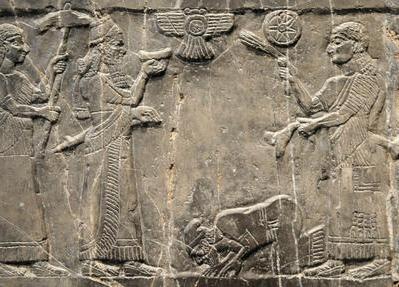
A similar epic was written on clay tablets. They were found in ancient temples and palaces, and later deciphered. So what do we know from them?
The most ancient myth tells about the old gods who personify water, the sun, the moon and the earth. They gave birth to young heroes who began to "make noise". For this, the original decided to get rid of them. But the sky god Ea unraveled the insidious plan and was able to lull his father Abuza, who became the ocean.
The second myth tells of the rise of Marduk. It was written, apparently, during the subjugation of the rest of the city-states by Babylon. After all, it was Marduk who was the supreme deity and guardian of this city.
The legend says that Tiamat (primal chaos) decided to attack the "heavenly" gods and destroy them. In several battles, she won and the originals "desponded". In the end, they decided to send Marduk to fight Tiamat, who successfully completed the task. He cut the body of the fallen. From its different parts, he made the sky, the earth, Mount Ararat, the Tigris and Euphrates rivers.
Thus, the Sumerian-Akkadian beliefs become the first step towards the formation of the institution of religion, when the latter becomes an important part of the state.
Ancient Egypt
Egypt became the successor of the religion of Sumer. His priests were able to continue the work of the Babylonian priests. They developed such sciences as arithmetic, geometry, astronomy. Stunning examples of spells, hymns, sacred architecture were also created. The tradition of posthumous mummification of noble people and pharaohs has become unique.
The rulers of this period of history begin to proclaim themselves the sons of the gods and, in fact, the celestials themselves. On the basis of such a worldview, the next stage of the religion of the ancient world is built. A tablet from the Babylonian palace speaks of the consecration of the ruler received from Marduk. The texts of the pyramids illustrate not only the chosenness of the pharaohs by God, but also show a direct family connection.
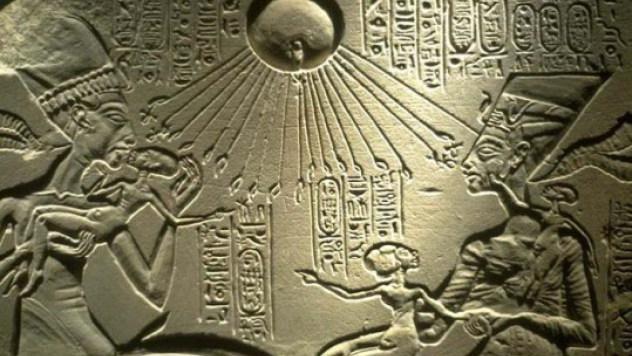
However, such veneration of the pharaohs was not from the very beginning. It appeared only after the conquest of the surrounding lands and the creation of a strong state with a powerful army. Before that, there was a pantheon of gods, which later changed a little, but retained its main features.
So, as stated in the work of Herodotus "History", the religion of the ancient Egyptians included rituals dedicated to different seasons, the worship of deities and the conduct of special rituals designed to strengthen the position of the country in the world.
The myths of the Egyptians tell of the goddess of heaven and the god of the earth, who gave birth to everything that surrounds us. These people believed that the sky is Nut, standing above Geb, the god of the earth. She touches him only with the tips of her fingers and toes. Every evening she eats the sun, and every morning she gives birth to it again.
The main deity in the early period of Ancient Egypt was Ra, the god of the sun. Later he lost the primacy to Osiris.
The legend of Isis, Osiris and Horus later formed the basis of many myths about the murdered and resurrected savior.
Zoroastrianism
As we mentioned at the beginning, the religion of ancient people attributed powerful properties to various elements and objects. This belief was preserved among the ancient Persians. Neighboring peoples called them "fire worshipers", as they especially revered this phenomenon.
This is one of the first world religions, which had its own Holy Scripture. Neither in Sumer, nor in Egypt, this was not the case. There existed only scattered books of spells and hymns, myths and recommendations for mummification. In Egypt, it is true, there was a book of the dead, but it cannot be called Scripture.
In Zoroastrianism there is a prophet - Zarathushtra. He received the scripture (Avesta) from the supreme god Ahura Mazda.
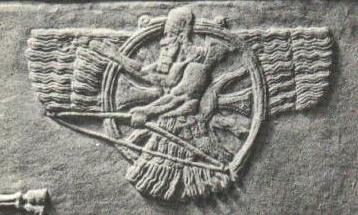
This religion is based on freedom of moral choice. Man every second oscillates between evil (it is personified by Angro Mainyu or Ahriman) and good (Ahura Mazda or Hormuz). Zoroastrians called their religion "Good faith", and themselves "pious".
The ancient Persians believed that reason and conscience were given to a person in order to correctly determine his side in the spiritual world. The main postulates were helping others and supporting those in need. The main prohibitions are violence, robbery and theft.
The goal of any Zoroastrian was to achieve good thoughts, words and deeds at the same time.
Like many other ancient religions of the East, the "Good Faith" proclaimed in the end the victory of good over evil. But Zoroastrianism is the first creed in which such concepts as heaven and hell meet.
They were called fire worshipers for the special reverence that they rendered to fire. But this element was considered the crudest manifestation of Ahura Mazda. The main symbol of the supreme god in our world, the faithful considered sunlight.
Buddhism
The religion of Buddhism has long been popular in East Asia. Translated into Russian from Sanskrit, this word means "the doctrine of spiritual awakening." Its founder is considered to be Prince Siddhartha Gautama, who lived in India in the sixth century BC. The term "Buddhism" appeared only in the nineteenth century, while the Hindus themselves called it "dharma" or "boddhidharma".
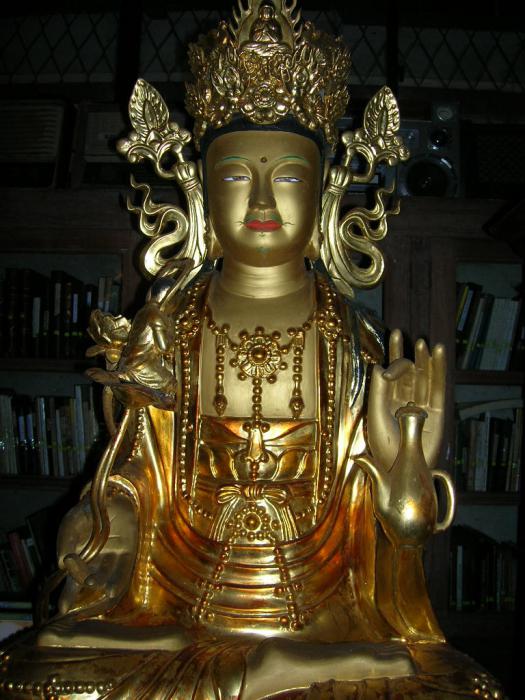
Today it is one of the three world religions, which is considered the most ancient of them. Buddhism permeates the cultures of the peoples of East Asia, so understanding the Chinese, Hindus, Tibetans and many others is possible only after getting to know the basics of this religion.
The main ideas of Buddhism are:
- life is suffering;
- suffering (dissatisfaction) has a reason;
- there is an opportunity to get rid of suffering;
- there is a way to deliverance.
These postulates are called the four noble truths. And the path that leads to getting rid of dissatisfaction and frustration is called the Eightfold.
It is believed that the Buddha came to these conclusions after seeing the troubles of the world and sitting for many years under a tree meditating on the question of why people suffer.
Today, this belief is considered a philosophical trend, not a religion. The reasons for this are as follows:
- in Buddhism there is no concept of God, soul and redemption;
- there is no organization, unified dogmas and unconditional devotion to the idea;
- its adherents believe that there are an infinite number of worlds;
- in addition, you can belong to any religion and be guided by the principles of Buddhism, this is not prohibited here.
Antiquity
Adherents of Christianity and other monotheistic beliefs, the first worship of people to nature is called paganism. Therefore, we can say that it is the oldest world religion. Now we will move from India to the Mediterranean coast.
Here, during the period of antiquity, Greek and Roman cultures were especially developed. If you look closely at the pantheons of ancient gods, they are practically interchangeable and equivalent. Often the only difference is the name of a particular character.
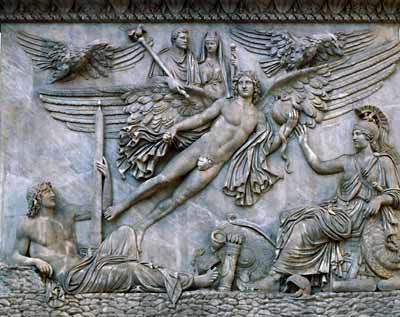
It is also noteworthy that this religion of the ancient gods identified celestials with people. If we read the ancient Greek and Roman myths, we will see that the immortals are just as petty, jealous and mercenary as humanity. They help those they favor, they can be bribed. The gods, angry for a trifle, can destroy an entire nation.
Nevertheless, it was precisely this approach to worldview that helped shape modern values. Philosophy and many sciences were able to develop on the basis of such frivolous relations with higher forces. If we compare antiquity with the era of the Middle Ages, it becomes clear that freedom of expression is more valuable than the planting of the "true faith".
The ancient gods lived on Mount Olympus, which is located in Greece. Also, people then inhabited forests, reservoirs and mountains with spirits. It was this tradition that later resulted in European gnomes, elves and other fabulous creatures.
Abrahamic religions
Today we divide historical time into the period before the birth of Christ and after. Why did this particular event become so important? In the Middle East, the progenitor is a man named Abraham. It is mentioned in the Torah, the Bible and the Koran. He spoke for the first time about monotheism. About what the religions of the ancient world did not recognize.
The table of religions shows that it is the Abrahamic beliefs that today have the largest number of adherents.
Judaism, Christianity and Islam are considered the main currents. They appeared in the order listed. Judaism is considered the oldest, it appeared somewhere in the ninth century BC. Then, around the first century, Christianity arises, and in the sixth, Islam.
Yet it is these religions alone that have spawned countless wars and conflicts. Intolerance towards non-Christians is a hallmark of adherents of Abrahamic beliefs.
Although if you carefully read the Scriptures, they speak of love and mercy. Only the laws of the early Middle Ages described in these books are confusing. The problems begin when fanatics want to apply outdated dogmas to a modern society that has already changed to a great extent.
Due to the differences between the text of the books and the behavior of believers, different currents arose over the centuries. They interpreted the Scriptures in their own way, which led to "wars of faith."
Today the problem is not completely solved, but the methods have improved slightly. Modern "new churches" are more focused on the inner world of the flock and the purse of the priest than on the subjugation of heretics.
Ancient religion of the Slavs
Today, on the territory of the Russian Federation, one can meet both the most ancient forms of religion and monotheistic currents. However, who did our ancestors originally worship?
The religion of Ancient Russia today is called the term "paganism". This is a Christian concept, meaning the faiths of other peoples. Over time, it has acquired a slightly derogatory connotation.
Today, attempts are being made to restore ancient beliefs in different countries of the world. Europeans, reconstructing the faith of the Celts, call their actions "tradition". In Russia, the names "relatives", "Slavic-Aryans", "Rodnovers" and others are accepted.
What materials and sources help to restore bit by bit the worldview of the ancient Slavs? Firstly, these are literary monuments, such as the Book of Veles and The Tale of Igor's Campaign. Some rites, names and attributes of various gods are mentioned there.
In addition, there are quite a few archaeological finds that clearly illustrate the cosmogony of our ancestors.
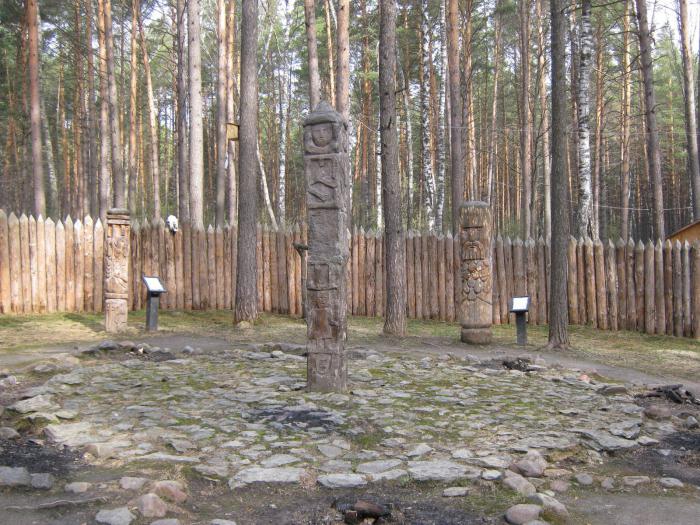
The supreme gods were different for different tribes. Over time, Perun, the god of thunder, and Veles stand out. Also often Rod appears in the role of the progenitor. Places of deity worship were called "temples" and were located in forests or on the banks of rivers. Wooden and stone sculptures were placed on them. People came there to pray and make sacrifices.
Thus, dear readers, today we got acquainted with such a concept as religion. In addition, they got acquainted with various ancient beliefs.
Good luck, friends. Be patient with each other!
